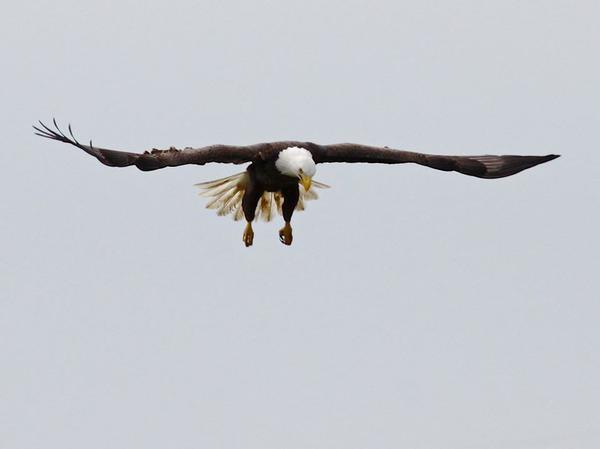
Bald eagle nesting season will be here before you know it.
This month the Audubon Society of Western Pennsylvania installed new cameras at the Hays and Harmar sites. When indoor setup is complete we’ll have a birds’ eye view of both nests.
Meanwhile, here are some facts about bald eagles (Haliaeetus leucocephalus) to get us in the mood.
- Bald eagles are “sea eagles” whose primary food is fish so they always live near water. Bald eagles are opportunistic and will eat carrion and steal from other birds, especially osprey.
- Males and females look alike but the males are smaller. Their dimensions are:
- Wingspan: 6 to 7.5 feet
- Height when perched: 3 to 3.5 feet tall
- Weight: 8 to 15 pounds
- Bald eagles begin nesting in November to April — earlier in the south, later in the north. For example, the webcam pair in Southwest Florida laid their first egg on November 20 while Pittsburgh area eagles lay their first eggs in February or March.
- Bald eagles nest in trees or on cliffs and often return to the same nest year after year.
- Their courtship includes adding sticks and grasses to the nest. Consequently the nests can reach 7 feet across, 12 feet deep, and weigh more than 4,000 pounds. This weight brings down the nest tree so the eagles pick a new tree and start over.
- The female lays one to three eggs, a (variable) day or two gap between each egg.
- She begins incubation as soon as she lays the first egg. Incubation lasts 35-40 days.
- Nestlings hatch consecutively, the oldest egg first.
- Young eagles make their first flight 70 to 92 days after hatching. (I have seen this described as “about 75 days after hatch.”)
- Bald eagles reach sexual maturity in their fourth year. They can breed in year four but usually wait until year five.
Though we can’t see it on camera, Pittsburgh’s bald eagles are hanging out together and thinking about courtship.
If history is any guide, the first egg at Hays will appear February 10 to 20 and the first egg at Harmar on February 28 to early March.
It’s almost Eagle Season.
(photo by Chuck Tague)
Great,succinct article
WAITING